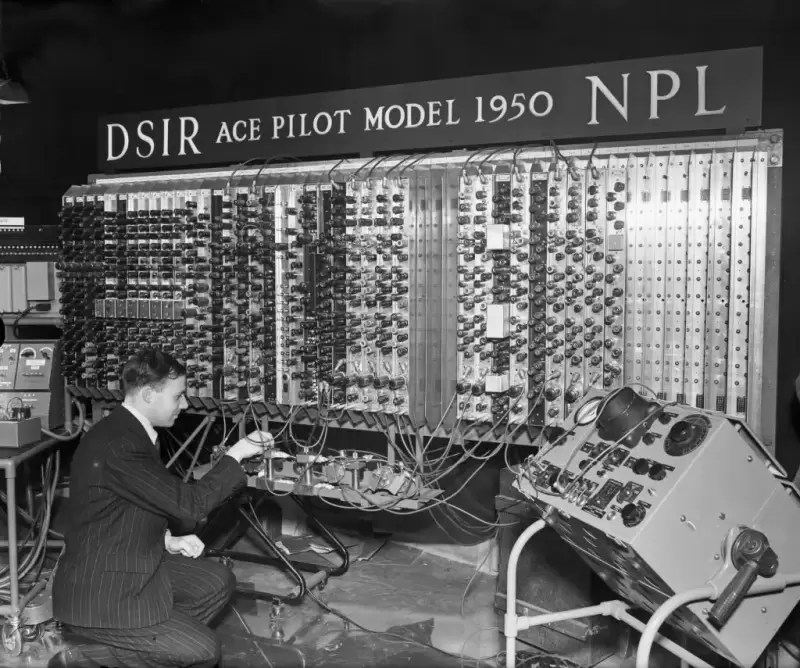 |
|
 |
|
 |
|
 |
|
 |
|
 |
|
 |
|
 |
|
 |
|
 |
|
 |
|
 |
|
 |
|
 |
|
 |
|
這不是“我們忘記的東西”的感覺,而是從核心建築意義上講。它沒有真實的內存層。

Web3 has a memory problem. Not in the “we forgot something” sense, but in the core architectural sense. It doesn’t have a real memory layer.
Web3有一個內存問題。不是在“我們忘記了某些東西”的意義上,而是從核心建築意義上講。它沒有真實的內存層。
Blockchains today don’t look completely alien compared to traditional computers, but a core foundational aspect of legacy computing is still missing: A memory layer built for decentralization that will support the next iteration of the internet.
與傳統計算機相比,當今區塊鏈看起來並不完全是陌生的,但是遺留計算的核心基礎方面仍然缺少:用於分散式中心化的內存層,將支持Internet的下一次迭代。
After World War II, John von Neumann laid out the architecture for modern computers. Every computer needs input and output, a CPU for control and arithmetic, and memory to store the latest version data, along with a “bus” to retrieve and update that data in the memory. Commonly known as RAM, this architecture has been the foundation of computing for decades.
第二次世界大戰後,約翰·馮·諾伊曼(John von Neumann)列出了現代計算機的建築。每個計算機都需要輸入和輸出,用於控制和算術的CPU以及存儲器存儲最新版本數據,以及“總線”以檢索和更新該數據在內存中。幾十年來,這種體系結構通常稱為RAM,一直是計算的基礎。
At its core, Web3 is a decentralized computer — a “world computer.” At the higher layers, it’s fairly recognizable: operating systems (EVM, SVM) running on thousands of decentralized nodes, powering decentralized applications and protocols.
Web3的核心是一台分散的計算機,這是一台“世界計算機”。在較高的層上,它是相當可識別的:操作系統(EVM,SVM)在數千個分散的節點上運行,為分散的應用程序和協議提供動力。
But, when you dig deeper, something’s missing. The memory layer essential for storing, accessing and updating short-term and long term data, doesn’t look like the memory bus or memory unit von Neumann envisioned. Instead, it's a mashup of different best-effort approaches to achieve this purpose, and the results are overall messy, inefficient and hard to navigate.
但是,當您深入研究時,缺少一些東西。存儲層對於存儲,訪問和更新短期和長期數據必不可少,看起來不像是設想的內存總線或內存單元。取而代之的是,它是實現此目的的不同最佳方法的混搭,結果總體上是混亂,效率低下且難以導航。
Here’s the problem: if we’re going to build a world computer that’s fundamentally different from the von Neumann model, there better be a really good reason to do so. As of right now, Web3’s memory layer isn’t just different, it’s convoluted and inefficient. Transactions are slow. Storage is sluggish and costly. Scaling for mass adoption with this current approach is nigh impossible. And, that’s not what decentralization was supposed to be about.
問題是:如果我們要構建一台與馮·諾伊曼(Von Neumann)模型根本不同的世界計算機,那麼最好有一個很好的理由這樣做。截至目前,Web3的內存層不僅不同,而且令人費解且效率低下。交易很慢。存儲遲鈍且昂貴。使用這種當前方法進行大規模採用的擴展是不可能的。而且,這不是權力下放的意義。
But there is another way. A lot of people in this space are trying their best to work around this limitation and we're at a point now where the current workaround solutions just cannot keep up. This is where using algebraic coding, which makes use of equations to represent data for efficiency, resilience and flexibility, comes in.
但是還有另一種方式。這個領域的許多人都在盡力解決這一限制,而我們現在正處於當前的解決解決方案無法跟上的時刻。在這裡,使用代數編碼(利用方程式代表效率,彈性和靈活性)的數據出現。
The core problem is this: how do we implement decentralized code for Web3?
核心問題是:我們如何為Web3實施分散的代碼?
This is why I took the leap from academia where I held the role of MIT NEC Chair and Professor of Software Science and Engineering to dedicate myself and a team of experts in advancing high-performance memory for Web3. I saw something bigger: the potential to redefine how we think about computing in a decentralized world.
這就是為什麼我從學術界取得了飛躍的原因,在那裡我擔任MIT NEC主席和軟件科學和工程學教授,奉獻自己和專家團隊,以推進Web3的高性能記憶。我看到了更大的東西:重新定義我們對分散世界中計算的看法的潛力。
My team at Optimum is creating decentralized memory that works like a dedicated computer. Our approach is powered by Random Linear Network Coding (RLNC), a technology developed in my MIT lab over nearly two decades. It’s a proven data coding method that maximizes throughput and resilience in high-reliability networks from industrial systems to the internet.
我的最佳團隊是創建像專用計算機一樣工作的分散記憶。我們的方法由隨機線性網絡編碼(RLNC)提供動力,這是我的MIT實驗室中近二十年來開發的技術。這是一種已驗證的數據編碼方法,可最大程度地提高從工業系統到互聯網的高可靠性網絡中的吞吐量和彈性。
Data coding is the process of converting information from one format to another for efficient storage, transmission or processing. Data coding has been around for decades and there are many iterations of it in use in networks today. RLNC is the modern approach to data coding built specifically for decentralized computing. This scheme transforms data into packets for transmission across a network of nodes, ensuring high speed and efficiency.
數據編碼是將信息從一種格式轉換為另一種格式以進行有效存儲,傳輸或處理的過程。數據編碼已經存在數十年了,當今網絡中使用了許多迭代。 RLNC是專門用於分散計算的數據編碼的現代方法。該方案將數據轉換為跨節點網絡傳輸的數據包,從而確保高速和效率。
With multiple engineering awards from top global institutions, more than 80 patents, and numerous real-world deployments, RLNC is not only a theory but a tested and proven technology. It has received recognition such as the 2009 IEEE Communications Society and Information Theory Society Joint Paper Award for the work "A Random Linear Network Coding Approach to Multicast." RLNC's broader impact was acknowledged with the IEEE Koji Kobayashi Computers and Communications Award in 2022.
憑藉來自全球頂級機構的多個工程獎項,80多種專利以及眾多現實世界的部署,RLNC不僅是一種理論,而且是經過測試和經過驗證的技術。它已獲得認可,例如2009年IEEE通信協會和信息理論協會聯合論文獎,即“一種隨機的線性網絡編碼方法”。 RLNC在2022年獲得IEEE Koji Kobayashi計算機和通信獎,對RLNC的更大影響得到了認可。
Now, RLNC is ready for decentralized systems, enabling faster data propagation, efficient storage, and real-time access, making it a key solution for Web3’s scalability and efficiency challenges.
現在,RLNC已準備好用於分散系統,實現更快的數據傳播,有效的存儲和實時訪問,這使其成為Web3的可擴展性和效率挑戰的關鍵解決方案。
Let’s take a step back. Why does all of this matter? Because we need memory for the world computer that’s not just decentralized but also efficient, scalable and reliable.
讓我們退後一步。為什麼所有這些都重要?因為我們需要對世界計算機的記憶,而不僅是分散的,而且還可以有效,可擴展和可靠。
Currently, blockchains rely on best-effort, ad hoc solutions that achieve partially what memory in high-performance computing does. What they lack is a unified memory layer that encompasses both the memory bus for data propagation and the RAM for data storage and access.
目前,區塊鏈依賴於最佳富度,臨時解決方案,這些解決方案在高性能計算中的部分內存中有部分實現。他們缺少的是一個統一的內存層,該內存層既包含用於數據傳播的內存總線,又包含用於數據存儲和訪問的RAM。
The bus part of the computer should not become the bottleneck, as it does now. Let me explain.
現在,計算機的公共汽車部分不應像現在一樣成為瓶頸。讓我解釋一下。
“Gossip” is the common method for data propagation in blockchain networks. It is a peer-to-peer communication protocol in which nodes exchange information with random peers to spread data across the network. In its current implementation, it struggles at scale.
“八卦”是區塊鍊網絡中數據傳播的常見方法。這是一個點對點通信協議,在該協議中,用隨機對等方向交換信息來傳播數據,以在整個網絡中傳播數據。在目前的實施中,它在大規模上掙扎。
Imagine you need 10 pieces of information from neighbors who repeat what they’ve heard. As you speak to them, at first you get new information. But as you approach nine out of 10, the chance of hearing something new from a neighbor drops,
想像一下,您需要從鄰居那裡重複他們聽到的信息的10條信息。當您與他們交談時,首先您會得到新信息。但是,當您接近10分之九的時,從鄰居下降的機會中,
免責聲明:info@kdj.com
所提供的資訊並非交易建議。 kDJ.com對任何基於本文提供的資訊進行的投資不承擔任何責任。加密貨幣波動性較大,建議您充分研究後謹慎投資!
如果您認為本網站使用的內容侵犯了您的版權,請立即聯絡我們(info@kdj.com),我們將及時刪除。
-

-

-

- Pytorch變壓器編碼器解釋了
- 2025-04-03 04:45:12
- 變壓器編碼器是一種深度學習體系結構,旨在有效地處理輸入序列。
-

-

-

- 模因硬幣市場進入了一個新時代。最初的笑話和互聯網趣味發展成為了嚴重的加密投資部分。
- 2025-04-03 04:40:12
- 模因硬幣現在結合了講故事,實用性和高壓社區,並有可能提供指數回報。
-

-

-

- 吉爾吉斯斯坦繼續鞏固其作為區域加密樞紐的地位
- 2025-04-03 04:30:12
- 該國正在推進其數字資產法規,測試法律框架和啟動許可平台。




























































